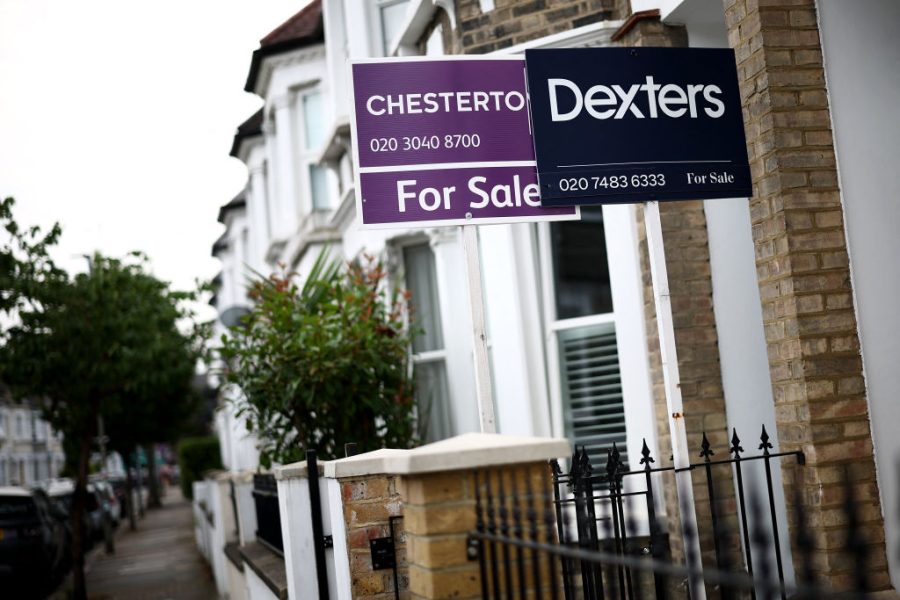It would be an exaggeration to say that in politics conventional wisdom is always wrong – but equally it’s not a bad rule of thumb. The prime mid-wittery of the moment concerns housing policy. We’re told that we’ve been building far too few houses. The way to help frustrated young adults escape the repressive confines of their childhood homes is, according to various newspaper columnists, to expand the general housing stock rapidly.
Deputy prime minister Angela Rayner’s mission to build 1.5 million new homes, riding roughshod over local objectors – the hated ‘Nimbys’ – is routinely praised as bold and overdue. One Tory former housing secretary told Fraser Nelson: ‘I can’t admit it, but I love it. She is doing what we should have done years ago.’
Labour wants to demonise Nimbys, who are to be depicted as ruthlessly selfish crushers of youthful dreams
For Keir Starmer, the policy is the way to make homeownership affordable. ‘Working people graft hard but are denied the security of owning their own home. I know how important it is – our pebbledash semi meant everything to our family growing up,’ says the Prime Minister.
But let’s think about that for a second. The only way to make conventional homeownership affordable anytime soon for people for whom it is currently unaffordable is to reduce house prices sharply. Yet no government is going to pursue a policy of crashing house prices because housing equity, for good or ill, is these days the principle financial asset of most of the population.
For a start, a house-price slump would destroy consumer confidence generally. More particularly, it would be grotesquely unfair on people who have stretched themselves over the last five years or so to get on the housing-ownership ladder. Lots of people would be plunged into outright negative equity. Starmer still talks about serving two full terms in office. He must know that deliberately engineering a significant reduction in house prices would kill that ambition stone dead.
Were one to design a realistic policy specifically to help young working people obtain their own homes it would involve creating a new intermediate form of ownership which could be expanded fast without crashing the main owner-occupier market. So-called ‘shared ownership’ is one example of this. Another would be covenanted modular housing, which would place various restrictions on purchasers. Sales – and resales – of such houses could be confined to British nationals in families in which at least one adult works full time. The covenant could stipulate that the houses are for owner-occupation only and cannot be let out. Thus could a new and discrete market segment be created to help the most deserving people.
This isn’t what Labour is proposing. Rather, it just wants to build more houses generally in rural, semi-rural and suburban areas, while actually reducing targets for new homes in big urban centres. Hence it is preparing to demonise Nimbys, who are to be depicted as ruthlessly selfish crushers of youthful dreams.
This is baloney. For a start, if we look at the housing stock in England – the part of the UK where affordability and availability issues really bite – we find something surprising. In 2001, England had 21.21 million homes. By 2011 that had risen to 22.98 million. By 2021 it had reached 24.93 million. And in 2023 it hit 25.40 million. That’s an increase of more than four million housing units inside a single generation, just shy of 20 per cent.
For any normal country in any normal time that would have been more than enough to deal with the net household formation that accompanies family breakdown and longer life expectancy. But while rates of housebuilding have been normal, something abnormal has been going on simultaneously: a vast expansion of England’s population via a reckless experiment with mass immigration. This is the elephant in the room.
As Trevor Phillips pointed out to Rayner last Sunday, even on cautious estimates of net migration averaging 300,000 a year – much lower than under Boris Johnson or Rishi Sunak – extra migrant housing demand will take up more than two-thirds of the planned uplift in the stock. As more and more data tumbles out, we are learning that most of our extra migrants have not contributed to any marked increase in GDP per capita anyway.
Given the government refuses to set a target for net migration, its offer to England’s villages and smaller towns is tantamount to a promise to concrete over more green fields. It does so in order mainly to cope with future migrant influxes that will probably not make the country more prosperous, certainly won’t make it more united but definitely will make it even more overcrowded. This is an offer which should be impolitely refused, whatever the mid-wits say.








Comments